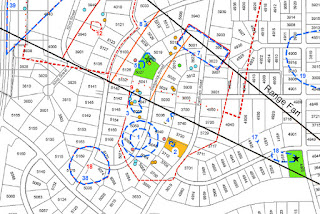When asked why there have not been any lawsuits to force owners to grant the Army access, Steve Hirsh of the U.S. Environmental Protection Agency said the agency would take legal action only if the Army were confident that a particular property held dangerous contamination. In a later interview, D.C. Attorney General Karl Racine said he would assess whether it would be appropriate for his office to initiate a lawsuit. The Army is continuing to actively look for dangerous chemicals and military hardware on 96 properties west of American University and in an area between Dalecarlia Parkway and Fordham Road.
Northwest Current
July 22, 2015
The community deserves to know why the Army believes there is a burial pit at 3720 Fordham Road and precisely what that pit might contain. Long-timers will recall that the surprise discovery of a munitions burial pit at 52nd Court in 1993 was the beginning of the Army’s enduring 23-year, $250 million cleanup of the 661-acre Spring Valley Formerly Used Defense Site. During World War I, that pit — located southeast of circular test trenches where chemical weapons were statically fired (meaning they were detonated in a fixed position) — was used to dispose of dud shells that were too dangerous to haul back to the Experiment Station at American University nearly a mile away. Back then, the chemical corps’ standard operating procedures specified having 4-foot-deep holes near any chemical weapons bunker so that, if leaky shells were discovered, they could immediately be put aside.
Another set of circular test trenches was identified as the Sedgwick Trench (POI 1), where “extensive field testing of Chemical Warfare Agents such as mustard, phosgene, chloropicrin and cyanogen chloride” was performed [Site-Wide Remedial Investigation Report, Section 1.5.3, page 11] ... The D.C. environmental agency noticed another anomaly adjacent to and southeast of the Sedgwick Trench in the backyard of 3720 Fordham Road. It was tagged as POI 2 and described as a possible pit used for the disposal of duds and “other material.” The homeowner cooperated with the search at first and allowed Army access for a geophysical survey that was eventually conducted in 2004. Although survey maps subsequently documented a large “anomalous area,” deeper than 4 feet below ground surface in the north half of the backyard, the Army Corps has futilely sought the property owner’s permission to intrusively investigate the POI 2 burial pit ever since.
Allen Hengst







No comments:
Post a Comment